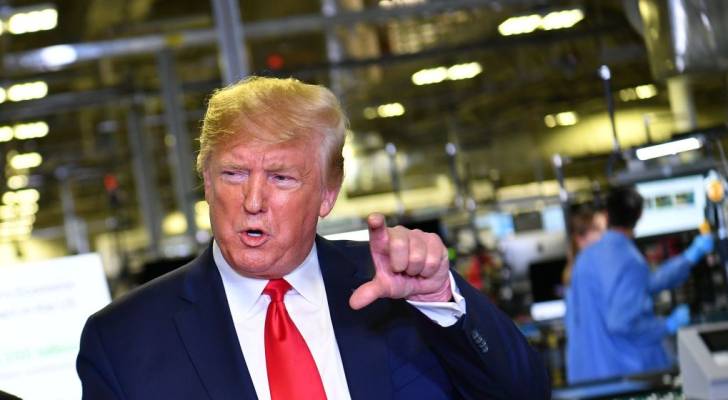
President Donald Trump says his tariffs on imported goods are encouraging companies to invest in the U.S., claiming that will lead to "better-paying American jobs making beautiful American-made cars, appliances, and other goods."
But critics say it could take years for American workers to develop the 21st-century manufacturing skills that overseas workers have already mastered.
Don’t miss
- I’m 49 years old and have nothing saved for retirement — what should I do? Don’t panic. Here are 5 of the easiest ways you can catch up (and fast)
- Gain potential quarterly income through this $1B private real estate fund — even if you’re not a millionaire. Here’s how to get started with as little as $10
- Thanks to Jeff Bezos, you can now become a landlord for as little as $100 — and no, you don’t have to deal with tenants or fix freezers. Here’s how
"In the U.S. you could have a meeting of tooling engineers, and I’m not sure we could fill a room.” Apple CEO Tim Cook says. “In China, you could fill multiple football fields."
In the meantime, critics warn, consumer products will continue to be manufactured overseas, and Trump’s tariffs will drive prices of those imports higher.
What made-in-the-U.S.A. goods could cost companies, consumers
There’s a reason companies moved production offshore in the first place: It’s cheaper thanks to lower labor costs. As a result, American consumers have long benefited from lower prices.
George Carrillo, CEO of the Hispanic Construction Council, says garments and furniture made overseas are generally 20% to 50% cheaper than U.S.-made goods. But for some products, like consumer technology items, the differential is even bigger.
Apple, which makes 80% of its products in China, is a good example.
Read more: Car insurance premiums could spike 8% by the end of 2025 — thanks to tariffs on car imports and auto parts from Canada and Mexico. But here’s how 2 minutes can save you hundreds of dollars right now
Bank of America Securities analyst Wamsi Mohan told CNBC that if iPhones were made in the U.S., they’d cost $1,500 instead of $1,199 due to labor costs.
Dan Ives specializes in technology as a senior equity research analyst at Wedbush Securities. He says American-made iPhones would cost significantly more — $3,500 — because Apple would not only have to pay U.S. wages, but spend $30 billion to move 10% of its supply chain back onshore.
If higher-paid American workers assembled the Apple Watch in the U.S., Apple would still need to import parts from Japan, South Korea, China and Europe. Those imported parts would be subject to Trump’s tariffs, driving manufacturing costs and consumer prices higher.
With Americans already struggling with inflation and a related surge in consumer debt, these added costs may be unsustainable.
Is it realistic for manufacturing to come back?
Offshoring began in the post-war 1950s and 1960s as more countries built factories to encourage foreign investment.
American firms were eager to move jobs offshore to enjoy up to a 50% reduction in labor costs, The IT revolution in the 1990s accelerated the trend. Between 2000 and 2010, the U.S. lost a third of its manufacturing jobs.
In the meantime, AI and robotics have revolutionized manufacturing.
Adam Balogh trains students at one of the few machine technology centers that exists in the U.S. — at Laney College, a community college in Oakland, California.
"Our big limiter here is the workforce,” he told ABC7 News. “We just haven’t been training people for these roles.”
He believes that to revive the U.S. manufacturing sector, more American students would have to learn robotics in middle school and high school, before even reaching community college.
Even if the U.S. workforce was ready, firms need to build new factories in the U.S.
In an article for Barron’s, Erin McLaughlin, a senior economist at The Conference Board, noted that it could take anywhere from three to 10 years to shift an assembly plant to the U.S.
"It would take decades to onshore at the scale that we need to keep up with American consumer habits," Lance Hastings of the California Manufacturers and Technology Association told ABC.
In other words, Trump’s tariffs will hit American pocketbooks before they change the U.S. manufacturing landscape.
What to read next
- Want an extra $1,300,000 when you retire? Dave Ramsey says this 7-step plan ‘works every single time’ to kill debt, get rich in America — and that ‘anyone’ can do it
- Here are 5 ‘must have’ items that Americans (almost) always overpay for — and very quickly regret. How many are hurting you?
- There’s a 60% chance of a recession hitting the American economy this year — protect your retirement savings with these essential money moves ASAP (most of which you can complete in just minutes)
This article provides information only and should not be construed as advice. It is provided without warranty of any kind.